The "stovepipe" instrument for optical observations
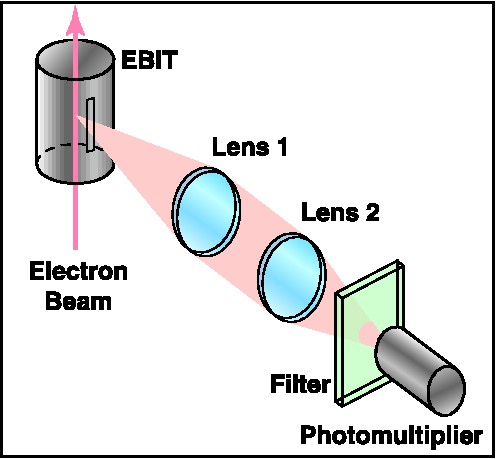
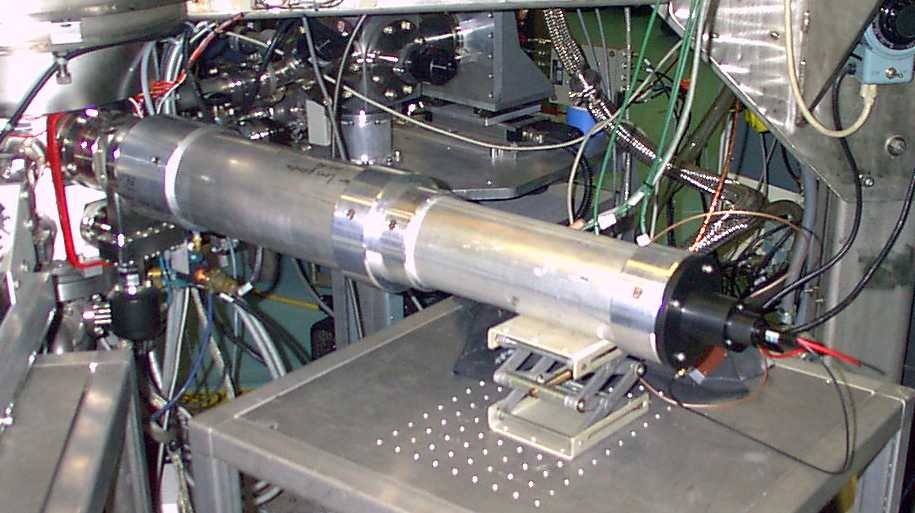
The time-resolved x-ray measurements use an IGLET-type solid state detector. Lifetimes in the range from microseconds to milliseconds have been studied using this option.
Time resolved measurements in the visible employ the "stovepipe" device and a low-noise photomultiplier. This detection system has been used for lifetime measurements in the millisecond range.
Time resolved observations in the EUV / soft-x-ray range and x-ray ranges are feasible with the XRS microcalorimeter, for timing features with millisecond lifetimes and above.
| Schematics | View of the stovepipe arrangement |
|---|---|
 | 
|
When the electron beam in the EBIT is switched on, ions of a given charge state are produced and then radiate (increasing part of the excitation curve). When the electron beam is switched off, excitation ends, but the ions remain trapped ("magnetic trapping mode" as in a Penning ion trap) and continue to emit light. The decay time constant can be extracted after subtraction of the background signal from the excitation curve, and it then reveals the upper level lifetime (after correction for ion losses from the trap).
| Excitation curve of Cl12+ at 5742 Å | Decay curve of the "green coronal line"
of Fe13+ at 5303 Å |
|---|---|
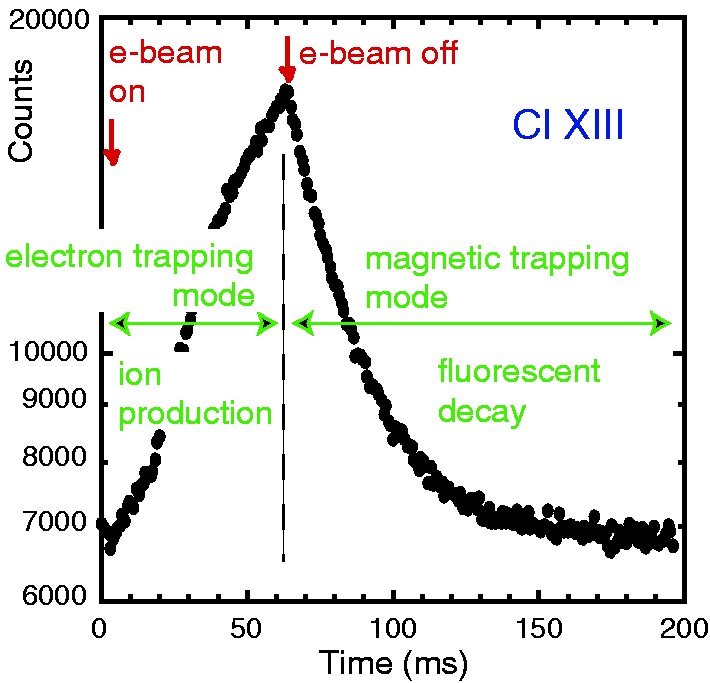 | 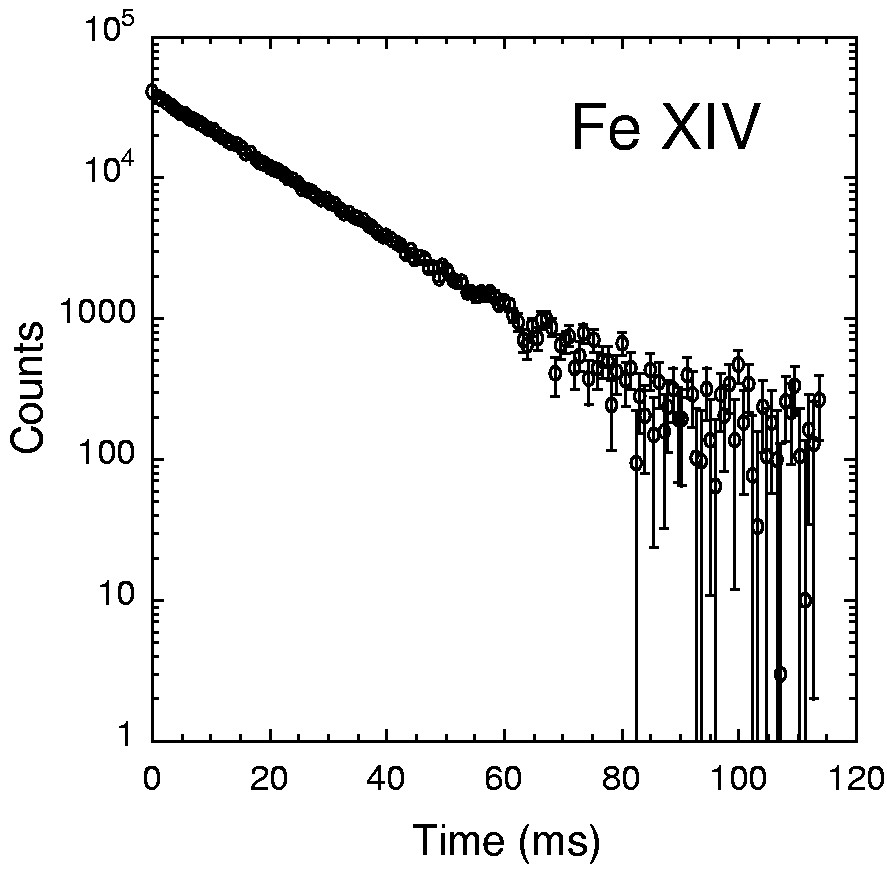
|
| Excitation curves of Ne8+ | |
|---|---|
|
In these measurements, the electron beam
has been switched off from t=0.18 ms to t=1.2 ms. When the electron beam energy lies just above the production threshold for Ne8+ ions (say, at 1 keV), a clean single-exponential decay curve is being observed. With an electron beam energy set well above the production threshold of the He-like ion, a higher electron beam current can be used, maximizing the x-ray signal. Under these conditions the decay curve shows a tail that relates to the recombination of more highly charged Ne ions. This also causes a systematic error in the lifetime data evaluation. | 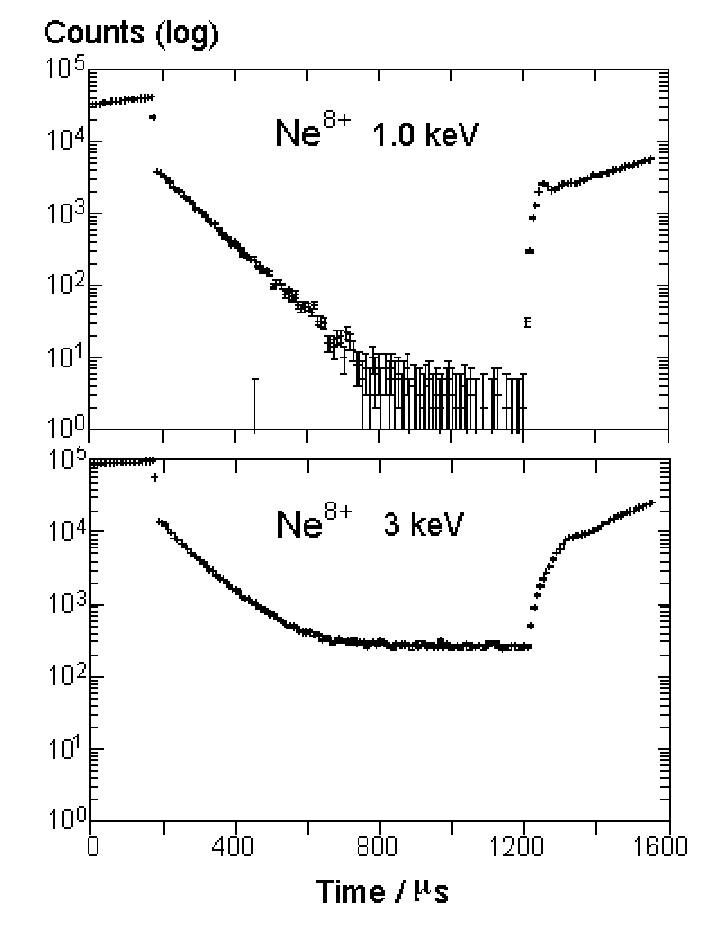
|
Atomic lifetime results obtained at EBIT and other electron beam ion traps
Three recent reviews cover more measurements of such long atomic level lifetimes, using a variety of ion trap types,
and give references to the physics context.
Physica Scripta 61, 257 (2000)
Physica Scripta T 100, 88 (2002)
Can. J. Phys. 80, 1481 (2002)
Talk at 20 Years of Spectroscopy at EBIT meeting, Berkeley (11/2007)
Talk at Mullard Space Science Laboratory and at Cambridge University (12/2007)
University of California Lawrence Livermore National Laboratory Electron Beam Ion Trap
(new directorate, web site lagging, temporarily hosted at Space Sciences Laboratory, UC Berkeley)
Livermore EBIT lifetime papers
Lifetime measurements at the Heidelberg heavy-ion storage ring TSR
Page updated on 14 Sep 2009